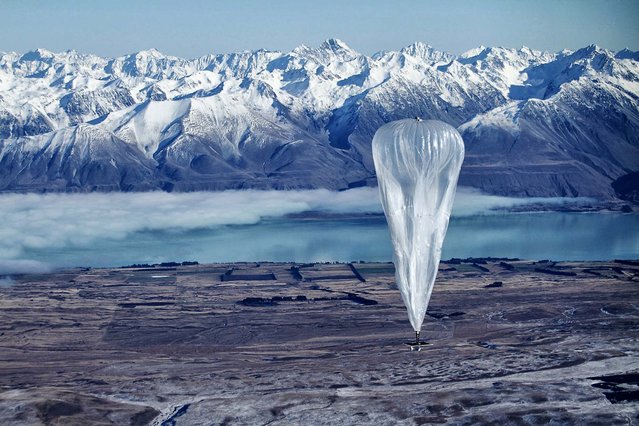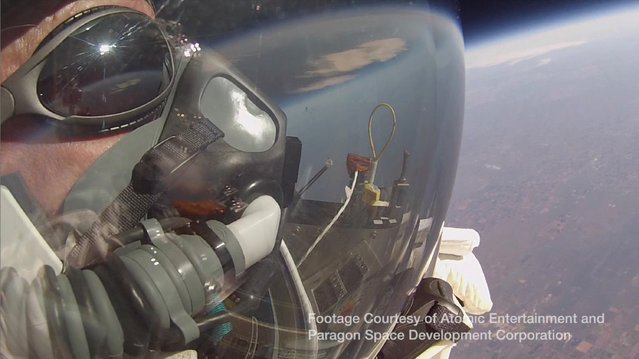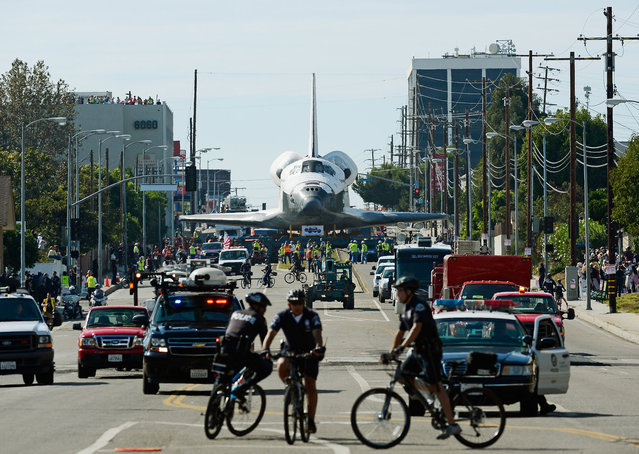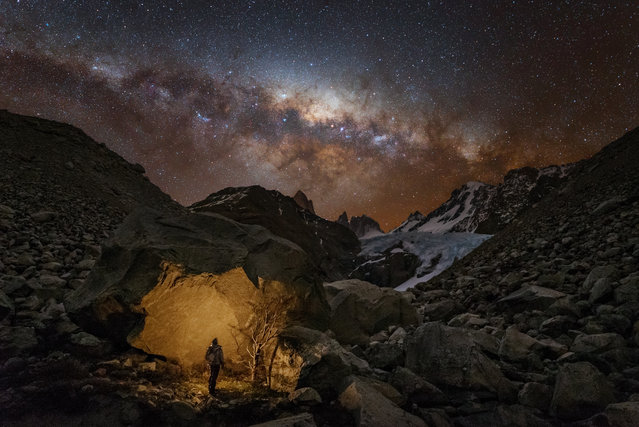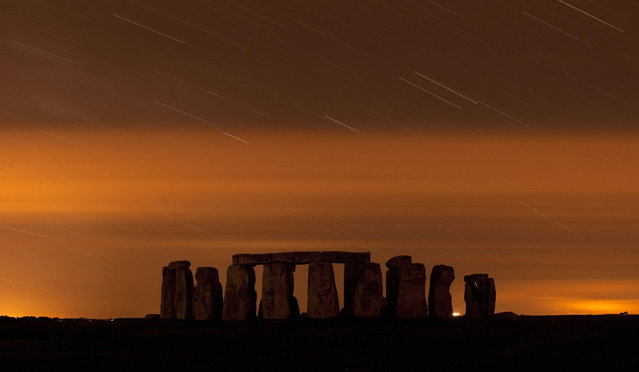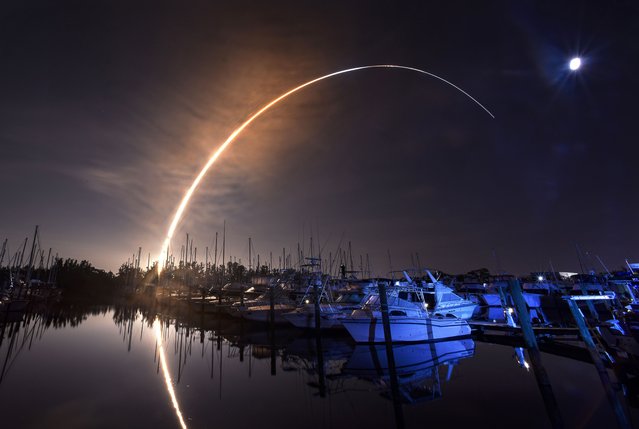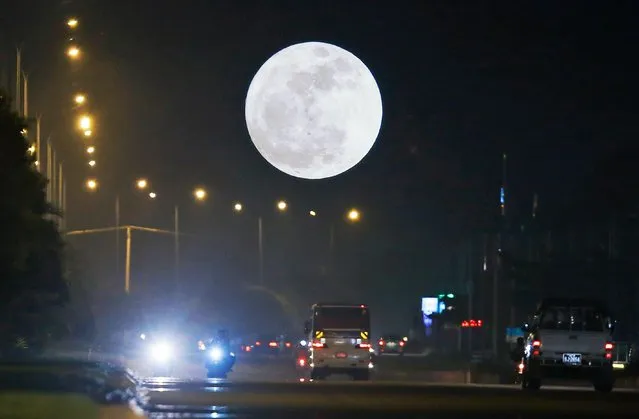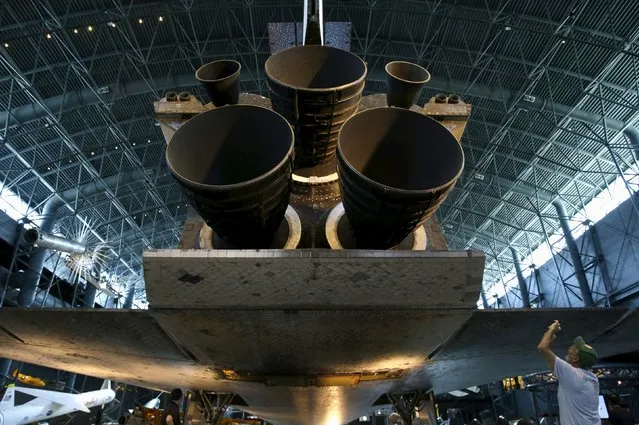
A man photographs the main engines of the space shuttle orbiter Discovery on display at the Udvar-Hazy Smithsonian National Air and Space Annex Museum in Chantilly, Virginia August 28, 2015. Shuttle Discovery had 27 years of service and flew 39 times before being retired in 2011. (Photo by Gary Cameron/Reuters)
30 Aug 2015 12:04:00,post received
0 comments

